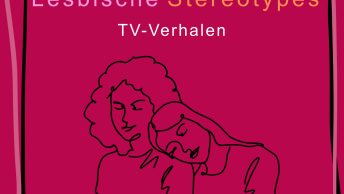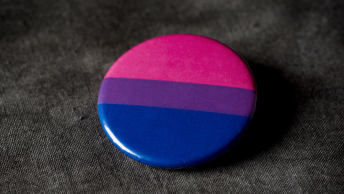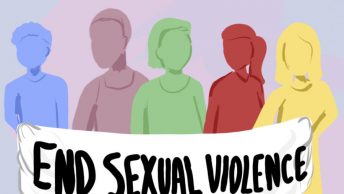In the blogpost series “Banning LGBTQ+ Content in the Russian Media”, the censorship of LGBTQ-related media content in Russia and its implications are studied. The blogposts are based on this thesis (in Dutch), in which more extensive research on this topic can be found.
In this third blogpost, a microlevel approach is taken to explore how the restricted representation of the LGBTQ+ community affects the attitudes towards this group, and what consequences this has for the community members’ mental health.
In most of the Western world, queer sexualities have gradually become more accepted and, consequently, attitudes towards the LGBTQ+ community have generally improved considerably (Roberts, 2019). This is partly because of the increased visibility of this group in the digital media. In Russia, however, attitudes towards the LGBTQ+ community are significantly less positive (Gulevich, Osin, Isaenko & Brainig, 2018). This is in no small part due to the anti-gay propaganda law, which severely restricts the media representation of the LGBTQ+ community. Aside from aggravating the attitudes towards the LGBTQ+ community in Russia, the anti-gay propaganda law has a negative impact on its members’ mental wellbeing.
Negative attitudes
Attitudes towards physical objects, ideas or people – in this case the LGBTQ+ community – represent our preferences or objections based on the information we receive (Friedenberg & Silverman, 2015). Attitudes can be influenced to a great extent by external factors, such as the media (Askew & Field, 2008). Seeing as in Russia the information the population receives about the LGBTQ+ community is either censored or framed, the government has considerable control over the population’s attitudes towards the LGBTQ+ community.
As described in the first and second blogpost of this series, the Russian government manipulates LGBTQ+ related content to depict the LGBTQ+ community as a threat to society, thereby inducing emotions of fear in the Russian population. This threat rhetoric also enhances negative stereotypes about the LGBTQ+ community. This reinforces classification of this community as the ‘out group’ and induces in-group favouritism, which worsens the position of the LGBTQ+ community even further (McLaughlin & Rodrgiuez 2017).
Concealment
The restricted visibility of the LGBTQ+ community in the media also affects its members’ personal wellbeing. Because the community is depicted as a threat to society, non-heterosexual individuals often feel as though they have to hide their sexuality from society. As a result, their public self becomes different from their private self. Research shows that concealment of the private self correlates significantly with depression, anxiety disorders and drug use (Larson & Chastain, 1990; Brennan, Dunham, Bowlen, Davis, Ji & Cochran, 2020). Concealment is also an important predictor of mental health risks (Meyer & Frost, 2013). Moreover, research shows that concealment correlates with internalized homophobia (Walch, Ngamake, Bovornusvakool & Walker, 2016).
Fear
As has become clear, the anti-LGBTQ+ measures in Russia lead to fear among both the LGBTQ+ community, because this is not accepted in society, and the non-LGBTQ+ majority, because it is manipulated into thinking that the LGBTQ+-community is a threat to society. This atmosphere of fear and conflict not only affects LGBTQ+ related aspects of society, but also undermines a harmonious development of Russian society as a whole.
Concluding remarks
In the blogpost series ‘Banning LGBTQ+ Content in the Russian Media’, the implications of the anti-gay propaganda law in Russia were explored from a macro- meso-, and microlevel perspective. It has become apparent that this topic is multi-faceted: it concerns not only the Russian media, but also both LGBTQ+ and heterosexual individuals, and the Russian society as a whole.
In summary, the Russian government censors and manipulates LGBTQ+ related content to fit its anti-LGBTQ+ ideology. To this end, non-heterosexuals are depicted as a threat to society. This leads to mental health problems among LGBTQ+ individuals. It also generates negative attitudes towards this community and, consequently, national support for the anti-LGBTQ+ measures. This makes future improvement of the social acceptance and emancipation of the LGBTQ+ community from within Russia unlikely. International awareness of, and resistance to, the oppression of the LGBTQ+ community in Russia is imperative if this situation is to improve in the future. This research has been aimed at contributing to this end, and its findings show that continued efforts are needed to progress towards a world where sexuality no longer determines one’s position in society and opportunities in life.
Jasmijn ter Haar, Bachelor student Liberal Arts and Sciences at the University of Utrecht
References
Askew, C., & Field, A. P. (2008). The vicarious learning pathway to fear 40 years on. Clinical psychology review, 28(7), 1249-1265.
Brennan, J. M., Dunham, K. J., Bowlen, M., Davis, K., Ji, G., & Cochran, B. N. (2020). Inconcealable: A cognitive–behavioral model of concealment of gender and sexual identity and associations with physical and mental health. Psychology of Sexual Orientation and Gender Diversity. Advance online publication.
Friedenberg, J. D., & Silverman, G. W. (2015). Cognitive Science (3e editie). Thousand Oaks, Canada: SAGE Publications.
Gulevich, O. A., Osin, E. N., Isaenko, N. A., & Brainis, L. M. (2018). Scrutinizing homophobia: A model of perception of homosexuals in Russia. Journal of homosexuality, 65(13), 1838-1866.
Larson, D. G., & Chastain, R. L. (1990). Self-concealment: Conceptualization, measurement, and health implications. Journal of Social and Clinical psychology, 9(4), 439-455.
McLaughlin, B., & Rodriguez, N. S. (2017). Identifying with a stereotype: The divergent effects of exposure to homosexual television characters. Journal of Homosexuality, 64(9), 1196-1213.
Meyer, I. H., & Frost, D. M. (2013). Minority stress and the health of sexual minorities. In C. J. Patterson & A. R. D’Augelli (Eds.), Handbook of psychology and sexual orientation (pp. 252–266). Oxford University Press.
Roberts, L. L. (2019). Changing worldwide attitudes toward homosexuality: The influence of global and region-specific cultures, 1981–2012. Social Science Research, 80, 114-131.
Walch, S. E., Ngamake, S. T., Bovornusvakool, W., & Walker, S. V. (2016). Discrimination, internalized homophobia, and concealment in sexual minority physical and mental health. Psychology of Sexual Orientation and Gender Diversity, 3(1), 37.
Photo
Pixabay









